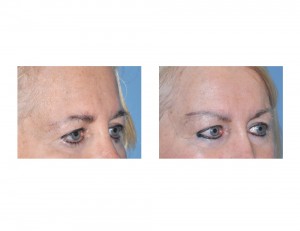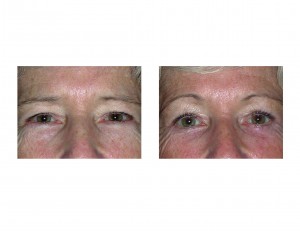Rejuvenation of the upper third of the face is based on improving the appearance of the upper eye and brow area. Besides an upper blepharoplasty to remove excess skin, lifting of the eyebrows may also be needed to improve upper eyelid hooding and elevate low hanging brows. The intent of both is to open the upper eye area for a more rested and refreshed look.

The appeal of the endoscopic browlift to a patient is obvious and plastic surgeons have embraced its use. But do patients find that it produces good results and are they happy they had it done? In the September issue of the Archives of Facial Plastic Surgery, a study reports on patient satisfaction and long-term results with the endoscopic browlift. Based on nearly 100 patients (almost all female patients with an average age of 60) who had the procedure between 1994 and 2007 with an average follow-up of over three years, the authors reviewed the incidence of complications and complaints as well as photographic measurements of before and after eyebrow-to-eye distances.

The study concludes that most patients find the procedure very satisfying. That being said one-third of the patients were not satisfied which I find to be a high percent for a cosmetic procedure. One of the reasons for not a higher rate of patient satisfaction may be the older age of the patients. The endoscopic browlift works on the basis of an epicranial shift, the brows are elevated because the entire scalp is moved backwards. (this is why the forehead gets longer with this type of browlift) This is fine if there is not too much brow ptosis (sagging) or a lot of horizontal forehead wrinkles. But when the patient is older, skin excision through an open browlift will produce a better result that will last longer. This relegates the endoscopic browlift, most of the time, to younger patients with earlier and less significant upper facial aging.
Dr. Barry Eppley
Indianapolis, Indiana


